The dynamic nature of business demands a strategic approach around efficiency and adaptability as pivotal elements of sales automation solutions for achieving success.
Manual sales processes, once the norm, now need to improve to meet the demands of a fast-paced market.
Addressing the critical demand for sales automation solutions, this post emphasizes their pivotal role in surmounting challenges, streamlining workflows, and elevating overall sales performance.
Table of Contents
- The Imperative Need for Sales Automation Solutions
- Understanding Sales Automation Solutions
- The Benefits of Sales Automation Solutions
- Key Features to Look for in Sales Automation Solutions
- Overcoming Common Challenges in Implementing Sales Automation
- Tips for a Seamless Transition and User Adoption
- Strategies for Overcoming Potential Hurdles
- What is the distinction between Marketing Automation and Sales Automation?
- Conclusion
The Imperative Need for Sales Automation Solutions

- The sheer volume of data, the complexity of customer interactions, and the demand for real-time insights often exceed the capabilities of manual systems.
- Manual processes impede the speed of sales execution activities, leading to potential oversights and missed opportunities.
- The challenges highlight the imperative need for advanced sales automation solutions.
- Sales automation solutions go beyond technological conveniences; they serve as strategic assets, empowering businesses to overcome the limitations of manual processes.
- Seamless technology integration into the sales workflow enables organizations to unlock new efficiency, accuracy, and agility levels.
Understanding Sales Automation Solutions

Sales automation is more than a technological tool; it’s a strategic paradigm shift that empowers businesses to revolutionize their sales processes.
Sales automation fundamentally entails implementing technological systems to automate monotonous duties, optimize workflows, and augment the overall efficacy of the sales procedure.
It enables sales teams to concentrate on their core competencies: relationship development and deal closing.
Integrating technology into sales workflows is a transformative process that aligns seamlessly with the dynamic nature of contemporary business operations.
The Benefits of Sales Automation Solutions

Sales automation solutions revolutionize operational efficiency by automating routine tasks and processes, liberating sales teams from time-consuming manual activities.
By automating data entry, lead scoring, and communication workflows, businesses experience a streamlined and error-free operational environment.
This newfound efficiency allows teams to allocate their time strategically, focusing on high-priority tasks that contribute directly to revenue generation.
Optimizing Time Management
Time is an invaluable resource, and sales automation solutions act as time-management maestros.
By automating repetitive tasks, teams can allocate their time strategically, dedicating more effort to building relationships, engaging with prospects, and crafting personalized strategies.
This optimized time management ensures that each interaction is meaningful and contributes to the overarching sales objectives.
Elevating Lead Nurturing
Lead nurturing is integral to successful sales strategies, and sales automation solutions excel in this domain. These solutions nurture leads effectively through automated workflows, personalized communication, and timely follow-ups.
Businesses can cultivate relationships, build trust, and guide leads seamlessly through the sales funnel by delivering targeted content and responses based on prospect behaviors.
Fostering Customer Relationship Management
The heart of any successful business lies in its customer relationships. Sales automation solutions empower enterprises to adopt a more personalized approach to customer relationship management.
Automated processes and data-driven insights enable teams to understand customer preferences, anticipate needs, and deliver a tailored experience. It enhances customer satisfaction and also builds long-term loyalty and advocacy.
Key Features to Look for in Sales Automation Solutions

As businesses embark on this journey, it becomes paramount to delve into the key features that distinguish exceptional sales automation solutions from the rest.
These critical features shed light on aspects that are instrumental in driving success and ensuring a seamless alignment with the unique needs of each business.
Intuitive User Interface and Ease of Adoption
A user-friendly interface is the cornerstone of successful sales automation. An intuitive platform ensures your team can swiftly adapt to the new system, minimizing downtime and facilitating a seamless transition.
Look for solutions prioritizing ease of use fostering quick adoption across all sales team levels.
Customization Capabilities
Businesses are all unique, and neither are their sales processes. A robust sales automation solution should offer customization capabilities, allowing businesses to tailor the system to their needs.
From customizable workflows to adaptable reporting structures, the ability to mold the platform to fit your unique processes is a critical feature that drives long-term success.
Integration with Existing Tools
Efficiency in sales relies on a cohesive ecosystem of tools. The integration capabilities of a sales automation solution are crucial for ensuring that it seamlessly aligns with your existing CRM, email platforms, and other essential tools.
This feature streamlines operations, eliminates data silos and provides a unified view of customer interactions.
Advanced Analytics and Reporting
Data is the lifeblood of informed decision-making. An effective sales automation solution should offer robust analytics and reporting features, providing insights into key performance indicators, sales trends, and customer behaviors.
The ability to derive actionable intelligence from the data empowers businesses to continuously refine strategies and optimize their sales approach.
Scalability and Flexibility
Businesses evolve, and so should their sales automation solution. Scalability and flexibility are fundamental features that enable a solution to grow and adapt alongside the changing needs of your organization.
Ensure the chosen platform seamlessly scales with your business, accommodating increased data volume, user expansion, and evolving processes.
Automation of Repetitive Tasks
The primary goal of sales automation is to streamline operations by automating repetitive tasks. Look for features that automate data entry, lead scoring, email campaigns, and other routine activities.
By offloading these manual tasks to the system, your sales development team can focus on high-value activities, significantly boosting overall productivity.
Lead Scoring and Qualification
Effective lead management is pivotal for sales success. The ability to implement lead scoring and qualification features allows businesses to prioritize leads based on their likelihood to convert.
It ensures that your team directs their efforts towards leads with the highest potential, optimizing resource allocation and boosting conversion rates.
Robust Security Measures
With sensitive customer data being a core component of sales operations, robust security features are non-negotiable.
Ensure the sales automation solution adheres to stringent security standards, providing encryption, access controls, and regular security updates to safeguard your valuable information.
Responsive Customer Support
Even the most intuitive systems may encounter occasional challenges. A sales automation solution with responsive customer support ensures any issues, minimizing disruptions to your operations.
Seek a provider renowned for their exceptional customer service and steadfast dedication to efficiently supporting your team.
Cost-Effectiveness
While features are crucial, cost-effectiveness is equally essential. Assess the pricing structure of the sales automation solution to ensure that it aligns with your budget and provides a clear return on investment. Look for transparent pricing models that scale with your business growth.
Overcoming Common Challenges in Implementing Sales Automation

In the pursuit of elevating sales processes, implementing sales automation solutions is a transformative endeavor. However, this journey has its challenges. The common obstacles faced during the implementation phase provide invaluable tips and strategies for a seamless transition and user adoption.
- Resistance to Change: Users might resist adopting new technologies, fearing disruptions to their established workflows.
- Data Migration Concerns: Migrating data from existing systems to the new platform can be complex, raising concerns about data accuracy and integrity.
- Integration Complexities: Integrating the new sales automation solution with existing tools and systems can pose technical challenges, leading to potential disruptions.
- Lack of Training: Insufficient training can help user adoption, as team members may need help to grasp the full functionality of the new system.
- Inadequate Communication: Clear communication about the benefits and changes brought by the sales automation solution is essential for garnering team buy-in.
Tips for a Seamless Transition and User Adoption

Now, let’s explore practical strategies for overcoming these challenges and ensuring a smooth transition:
Executive Buy-In and Leadership Support
Secure support from leadership to communicate the strategic importance of the new solution, fostering a culture of openness to change.
Comprehensive Training Programs
Invest in thorough training programs to empower users with the knowledge and skills needed to navigate and leverage the features of the sales automation system effectively.
Pilot Testing
Perform pilot testing involving a limited user base to detect and resolve potential concerns before a comprehensive deployment, enhancing the system through practical application.
Integration Roadmap
Develop a clear roadmap for integrating the sales automation solution with existing tools and systems, addressing technical complexities systematically.
Continuous Support and Feedback Loops
Establish ongoing support and feedback channels, creating a dynamic loop for addressing user concerns and optimizing the system based on user experiences.
Strategies for Overcoming Potential Hurdles

Beyond tips for user adoption, consider the following strategies to overcome potential hurdles:
- Agile Implementation Approach: Adopt an agile implementation approach, allowing for iterative adjustments based on evolving needs and challenges.
- Change Management Protocols: Implement robust change management protocols that guide users through the transition, emphasizing the positive impact of the new solution on their daily workflows.
- User Feedback Channels: Establish accessible channels for users to provide feedback, ensuring their concerns are heard and addressed promptly.
- Continuous Training and Skill Development: Provide training opportunities and skill development programs to keep users up-to-date on new features and functionalities, fostering continuous improvement.
- Data Security Assurance: Prioritize and communicate the stringent security measures in place to address any concerns related to data security during the transition.
What is the distinction between Marketing Automation and Sales Automation?

While both are integral components of a comprehensive business strategy, understanding their nuanced differences is crucial for organizations seeking to harness their combined power effectively.
Defining Sales Automation
Sales Automation revolves around optimizing and streamlining the various stages of the sales process. Its principal objective is maximizing the efficiency and efficacy of sales activities, spanning from lead generation to deal closure.
Sales Automation is the engine that powers your sales team’s day-to-day operations, automating repetitive tasks, managing customer interactions, and providing real-time insights into the sales pipeline.
Key Features of Sales Automation:
- Lead Management and Scoring
- Contact Management
- Opportunity Management
- Sales Forecasting
- Workflow Automation
Defining Marketing Automation
On the other hand, Marketing Automation is around the broader spectrum of lead generation and nurturing.
Its primary focus is engaging potential customers through various digital channels, delivering targeted content, and nurturing leads until they are deemed sales-ready.
Marketing Automation is the orchestrator of strategic campaigns, ensuring that prospects move seamlessly through the marketing funnel.
Key Features of Marketing Automation:
- Email Marketing Campaigns
- Lead Segmentation and Targeting
- Social Media Management
- Analytics and Reporting
- Content Personalization
Conclusion

Automated technologies liberate sales teams from repetitive duties and allow them to focus on relationship-building and transaction closure. Businesses face obstacles like change opposition, data transfer, and integration issues while implementing automation.
Key Points:
- Liberation Effectively: Automated systems go beyond being tools, freeing sales teams from routine tasks.
- Implementation Challenges: The path to automation involves overcoming resistance to change, addressing data migration concerns, and navigating integration complexities.
- Synergistic Integration: Combining Sales and Marketing Automation introduces a layer of synergy, propelling businesses toward comprehensive growth and success.
- Strategic Evolution: a strategic shift that future-proofs organizations against the evolving market demands, ensuring sustained success in the competitive business arena.
